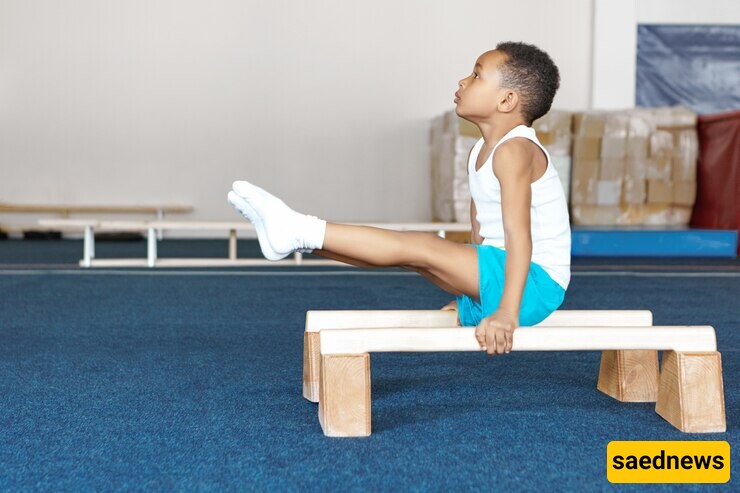SAEDNEWS: Gymnastics is a sport that combines mind-body control. When performed by a trained individual, it showcases graceful movements. Home-based gymnastics training provides an excellent alternative for those who cannot attend a gymnastics club. Let’s explore the benefits.


Gymnastics is one of the best sports for promoting general health and wellness. Numerous studies have highlighted its benefits for bone health, muscle development, and cognitive well-being. This sport not only helps build muscles and improve flexibility, but also encourages gymnasts to adopt healthy lifestyles, boosts self-confidence, and enhances decision-making skills.
Starting gymnastics at a young age is crucial, as it helps children develop strength and flexibility in all muscle groups. Additionally, gymnastics can lower blood pressure and promote the release of antioxidant enzymes, helping to combat metabolic and immune disorders. All children can benefit from joining gymnastics classes, and the following benefits illustrate just a few of its advantages.
Today, the benefits of gymnastics for hyperactive children are well-documented. Gymnastics and other sports provide an ideal environment for children with ADHD (Attention Deficit Hyperactivity Disorder), a condition that affects 5% of school-aged children, according to the CDC. ADHD often results in hyperactivity, attention difficulties, and impulsivity. This condition is more prevalent in boys and can persist into adolescence and adulthood. Enrolling a hyperactive child in a gymnastics class is an excellent way to improve behavioral and academic challenges. Let's explore how gymnastics can help children with ADHD.
Rolling and other gymnastics activities help children develop a range of motor skills, including fine and gross motor skills, cognitive growth, and perceptual thinking (such as knowing when to move, follow, start, or stop a play). These gymnastics skills strengthen focus and mental clarity while also enhancing physical fitness.
As hyperactive children acquire gymnastics skills, they begin to understand the connection between effort and results. Regular exercise also teaches them how to focus on tasks and complete them, which helps them in the classroom. As a result, they show better attention and greater task completion, realizing that hard work pays off. All of this leads to higher self-esteem.
Excessive energy is one of the main symptoms of ADHD, often leading to fatigue, anxiety, and restlessness. Gymnastics and other forms of exercise act as natural stress relievers, providing an opportunity for children to release pent-up tension. After each session, hyperactive children feel calmer and more relaxed, with improved focus. Gymnastics also boosts happiness, vitality, and supports overall physical health.

Children with ADHD often feel isolated from their peers. Gymnastics encourages them to interact with others, teaching them to respect others (such as listening to their coach or fellow children). Improved social skills and interaction with peers can significantly boost confidence. When choosing sports activities for these children, it’s important to focus on those that emphasize muscle engagement, as these tend to be more effective.
One of the additional benefits of gymnastics for hyperactive children is its positive impact on cardiovascular health. While research specifically linking gymnastics to hyperactivity is still lacking, it is undeniable that gymnastics, through rigorous physical activity, improves cardiovascular fitness. Running, stretching, and swinging during each session help reduce anxiety, improve mood, and alleviate hyperactivity symptoms.
Gymnastics equipment and movements, such as walking on beams and hanging, are similar to occupational therapy exercises. These controlled body movements improve sensory processing issues, which are common in children with ADHD. Children with ADHD often struggle to process sensory input and respond appropriately. However, gymnastics helps strengthen focus, motor coordination, and information processing skills, providing benefits both on and off the mat.
Gymnastics offers many physical, emotional, and cognitive benefits for hyperactive children. Whether it’s enhancing self-esteem, reducing stress, or improving social interactions, gymnastics provides valuable skills that help children thrive.
We hope you found this information about therapeutic gymnastics helpful. If you know someone with a hyperactive child, feel free to share this with them. For more detailed content, don’t forget to visit the Sports World section of Saed News.
Thank you for joining us!

